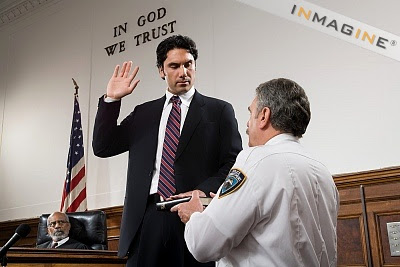We
frequently see in courtroom movie scenes when a witness goes to the platform,
stands up and takes an oath “to tell the truth and nothing but the truth”
--with the right hand raised up and the left hand on top the Bible. In reality,
however, crime witnesses do not accomplish “to tell the truth and nothing but
the truth” for they do not achieve full accuracy in their statements – whether consciously
or unconsciously.
When crime witnesses unconsciously display errors in their
statements of the crime scene, they might have experienced a psychological term
called change blindness. In visual perception, change blindness is a phenomenon
that occurs when a person viewing a visual scene apparently fails to detect
changes in the scene. Davies & Hine (2007) conducted an experiment with the
intention to show the relationship between the eyewitness testimony and change
blindness. In the experiment, a two-minute video clip depicted an opportunity
theft from a student house. Halfway through the film, the actor playing the
burglar changed identity. A community
sample of 80 people (40 men and 40 women) aged 15-65 years volunteered to
participate in the study. The sample was randomly subdivided into two
conditions – the intentional and incidental condition. Prior to the
presentation of the video footage, the intentional condition participants were
instructed to watch the film carefully because they would later be asked
questions about it, whereas the incidental condition participants were told to
watch a film about the dangers of unsecured property. Results have shown that
only 31 of the 80 participants reported change (39%). In addition, 65% of the
participants in the intentional condition noticed the change, compared with
12.5% of participants in the incidental condition. This explains that greater
attention associated with a deliberate memory task would lead to a higher rate
of change detection than the participants who were not primed to observe
carefully. In the change blindness
scenario, variables such as familiarity of the target person, exposure time,
and race demonstrably influence eyewitness identification. This shows that
eyewitnesses achieve relatively poor accuracy when it involves unfamiliar
people seen in brief encounters. So when eyewitnesses swore they told “tell the
truth and nothing but the truth,” you might want to think about that one over again.
Graham Davies, & Sarah
Hine. (2007). Change Blindness and Eyewitness Testimony. The
Journal of Psychology, 141(4), 423-34. Retrieved
January 17, 2011, from ABI/INFORM Global. (Document ID: 1314578911).

No comments:
Post a Comment